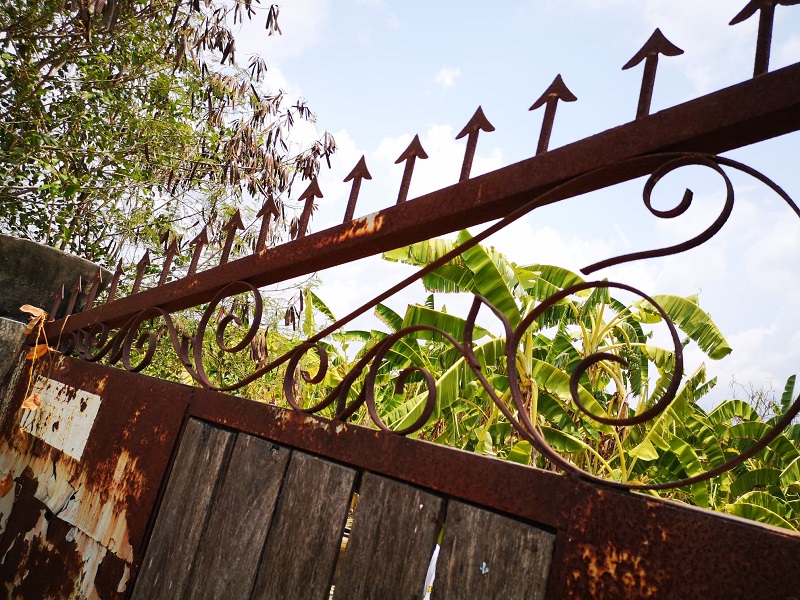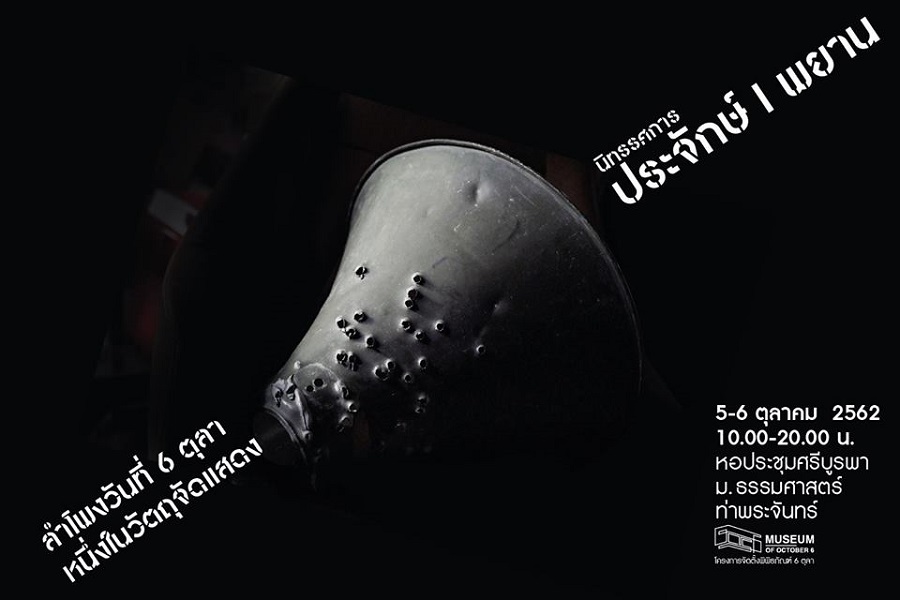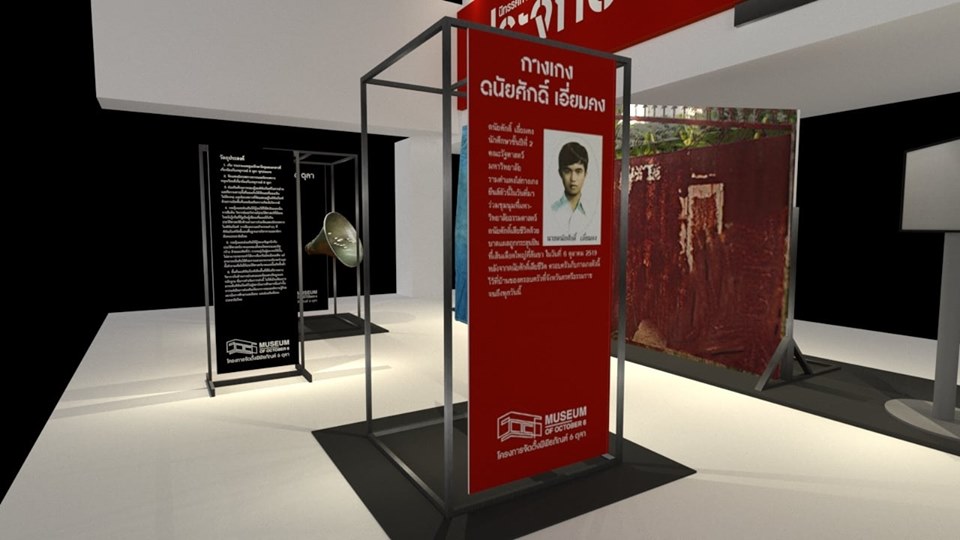A bullet-ridden and the rusty metal “Red Gate” where two electricians were lynched are among dozens of objects to show at an exhibition commemorating the Thammasat University massacre.
Considered one of the darkest chapters in the country’s history, the campus murder of students and activists will be recalled by the October 6 Museum Project this weekend, its 43rd anniversary, with a physical archive of artifacts from the incident on public display.
Photos: Thailand’s horrific Thammasat Massacre remembered by survivors
The project, by a group of academics and researchers, stemmed from a previous online archive relating to the Oct. 6, 1976, killings launched on its 40th anniversary, according to the editor of political magazine Fa Diew Kan.
“Since then I had a question in my mind, ‘What about the physical evidence such as the Red Gate? Where would it be? This is how the October 6 Museum Project started,” Thanapol Eawsakul said of the effort to preserve objects related to the massacre.
The objects to display include photographs, newspaper scraps, and objects such as the megaphone. Earlier this year they tracked down the infamous “Red Gate” where utility workers Vichai Kaetsripongsa and Chumporn Thumthai were found hanged after protesting the return of an exiled dictator.
Their murder was the subject of a mock hanging several days later at Thammasat University’s Tha Prachan campus in Bangkok’s old quarter. Elements from the extreme, ultranationalist right stormed the campus and murdered dozens of students and activists after the media played up accounts that one of the protesters was made to resemble now-King Vajiralongkorn, who was the crown prince at the time.

Personal belongings of those killed, from their clothes and report cards to funeral guest books will appear at the exhibit.
“We have jeans that belonged to Danaisak Eiamkong, a Ramkhamhaeng student who was on the security staff and died that day, Oct. 6, 1976,” Thanapol said. “His family kept his jeans for years as material evidence and in remembrance of the wound, and they kindly lent us the jeans to be displayed at the exhibition.”
Danaisak’s sister Nadda Eiamkong will join a panel discussion at the exhibition’s opening on Saturday.

Observers say many more than the 46 officially recognized by the government were killed that day. It is not mentioned in school and considerable effort has gone into burying its memory. Efforts to recall the incident often face censorship from the state and anger from pro-establishment corners of society.
According to Thanapol, the project’s biggest obstacle was collecting the materials and documents. And some people just didn’t want to get involved.
“As we all know, the massacre has been a tongue-tied issue in the Thai society, not only for the victims but also those who took action against them,” he said. “Retrieving documents and materials from over four decades ago therefore is not easy and straightforward.”
The exhibition runs 10am to 8pm this Saturday and Sunday at the Sri Burapa Auditorium of Thammasat University’s Tha Prachan campus.
The October 6 Museum Project is looking for financial support to secure a permanent space for its collection, as well as donation of additional objects associated with the massacre. For now, the items will be shown at rotating exhibitions.
FIND IT:
October 6 Museum Project’s exhibition
Sri Burapha Auditorium, Thammasat University (Tha Prachan campus)
10am – 8pm, Oct. 5 & Oct. 6




